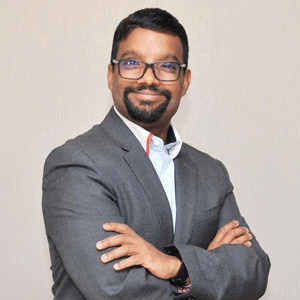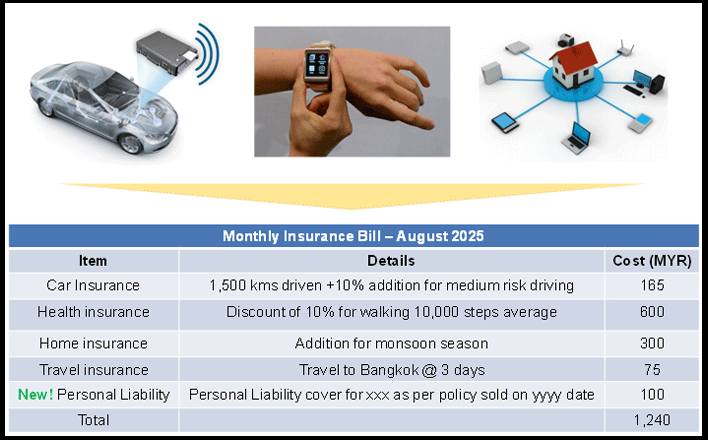THANK YOU FOR SUBSCRIBING
Editor's Pick (1 - 4 of 8)

Moving From Traditional Insurance Models to New Age Models
Rohit Chandrasekharan Nambiar, CEO, AXA Affin Life Insurance


Rohit Chandrasekharan Nambiar, CEO, AXA Affin Life Insurance
With the help of telematics, wearables technology, connected homes, and the like, insurance industry will move from underwriting on a pre-payment basis to a usage-based industry.
 4. With the help of AI, we can help weed out fraud much faster, ensuring that a good customer has a seamless interaction with the company and is not subject to process complexities.
5. Advent of multiple niche start-ups and specialist firms who help large companies like AXA to embrace these technologies very quickly.
How can we begin a transformation journey?
1. Initiate the journey by defining or reiterating a core purpose and vision.
At AXA, we have a very inspiring one from our Group CEO, Thomas Buberl- “There is no great company without a great purpose: ours is to empower our 107 million customers to live a better life.”
2. Define sponsors for each element of your journey. Sponsorship is not akin to being a Manager. Sponsors are in charge across the life span of the project. Not just pre, but post launch as well.
3. Set in motion a cultural transformation programme aimed at driving lean and agile thinking within the company. Lean lends itself to Agile as it removes wastage and simplifies a process. Post which, we can apply agile principles to implement new systems.
4. Execute in small chunks and be ready to have your own set of failures and learnings. Don’t believe any consultant who tells you that the ride will be smooth. It becomes smoother after a lot of mistakes, false starts and getting beaten up.
5. Do not under-estimate the importance of change management. Every project should have a change manager who works with the business units to co-own adoption KPIs.
AXA Affin General Insurance, Malaysia has launched telematics based motor insurance in the market. Customer can view the discount he has earned at any given point in time on his mobile App. And in our focus to move from a “payer to partner”, we send across an ambulance for an accident above a certain threshold and provide our customers with theft assistance. This was enabled through a partnership with CSE, who enable our execution locally.
We also implemented RPA extensively. We have used simple screen scrappers like Nastie and also more sophisticated BPM tools like UIPath to automate processes involving multiple systems. Most of these robots go-live within a time frame of less than four weeks and we have seen tangible business benefits. In some cases, with the help of lean and robotics, we have removed up to 80-90 percent of steps.
4. With the help of AI, we can help weed out fraud much faster, ensuring that a good customer has a seamless interaction with the company and is not subject to process complexities.
5. Advent of multiple niche start-ups and specialist firms who help large companies like AXA to embrace these technologies very quickly.
How can we begin a transformation journey?
1. Initiate the journey by defining or reiterating a core purpose and vision.
At AXA, we have a very inspiring one from our Group CEO, Thomas Buberl- “There is no great company without a great purpose: ours is to empower our 107 million customers to live a better life.”
2. Define sponsors for each element of your journey. Sponsorship is not akin to being a Manager. Sponsors are in charge across the life span of the project. Not just pre, but post launch as well.
3. Set in motion a cultural transformation programme aimed at driving lean and agile thinking within the company. Lean lends itself to Agile as it removes wastage and simplifies a process. Post which, we can apply agile principles to implement new systems.
4. Execute in small chunks and be ready to have your own set of failures and learnings. Don’t believe any consultant who tells you that the ride will be smooth. It becomes smoother after a lot of mistakes, false starts and getting beaten up.
5. Do not under-estimate the importance of change management. Every project should have a change manager who works with the business units to co-own adoption KPIs.
AXA Affin General Insurance, Malaysia has launched telematics based motor insurance in the market. Customer can view the discount he has earned at any given point in time on his mobile App. And in our focus to move from a “payer to partner”, we send across an ambulance for an accident above a certain threshold and provide our customers with theft assistance. This was enabled through a partnership with CSE, who enable our execution locally.
We also implemented RPA extensively. We have used simple screen scrappers like Nastie and also more sophisticated BPM tools like UIPath to automate processes involving multiple systems. Most of these robots go-live within a time frame of less than four weeks and we have seen tangible business benefits. In some cases, with the help of lean and robotics, we have removed up to 80-90 percent of steps.Weekly Brief
I agree We use cookies on this website to enhance your user experience. By clicking any link on this page you are giving your consent for us to set cookies. More info
Read Also













